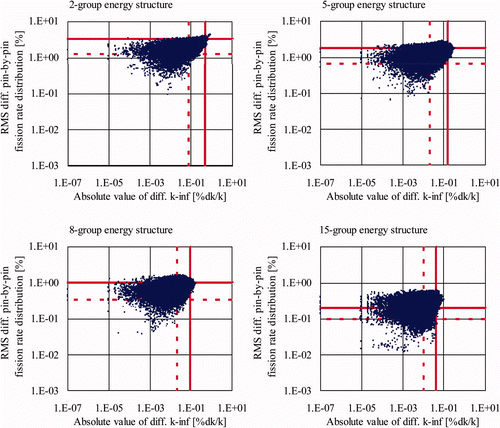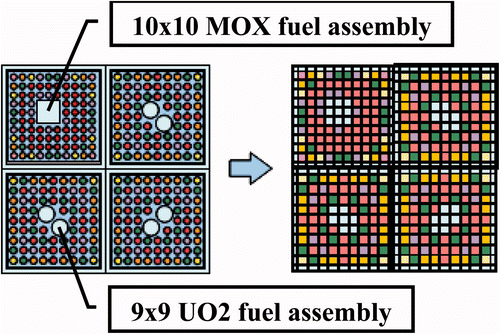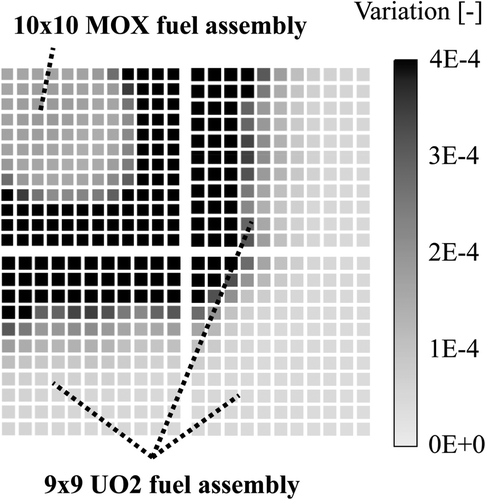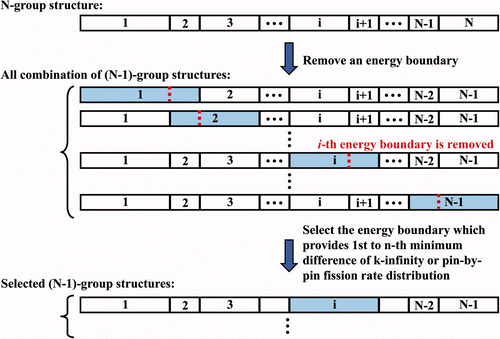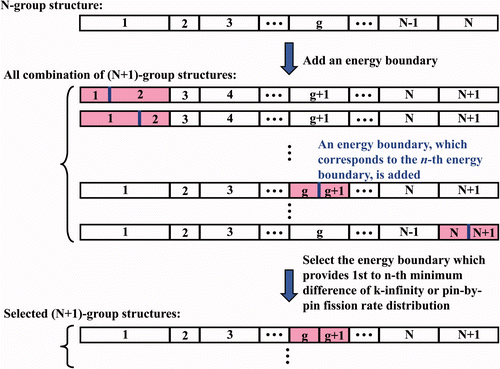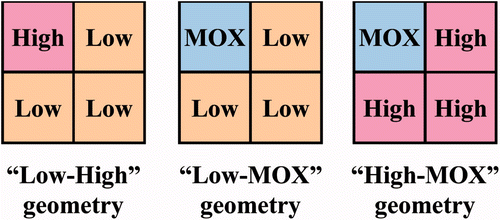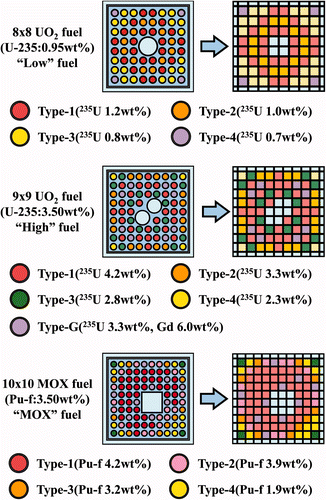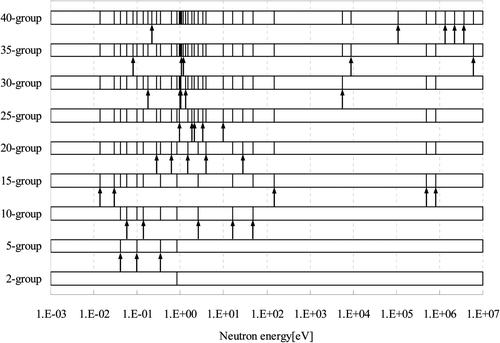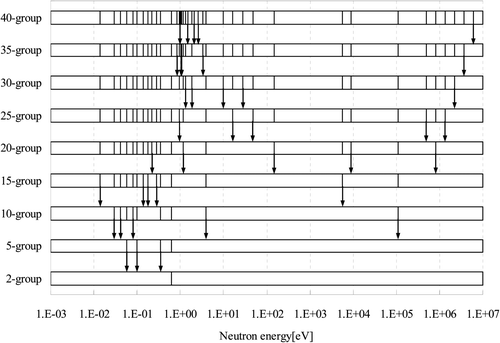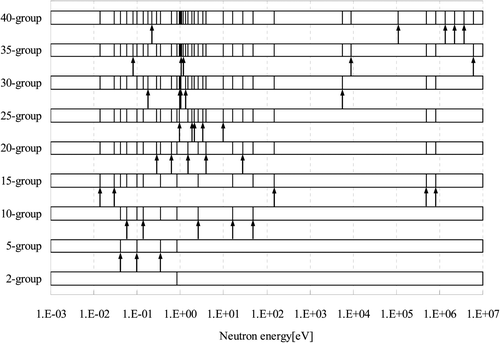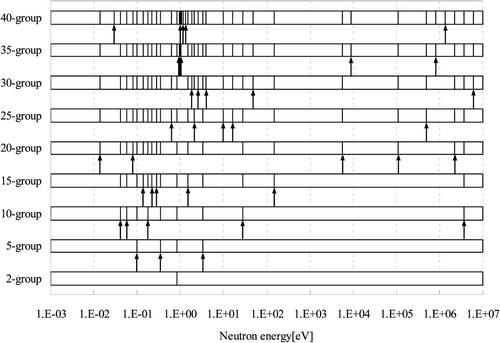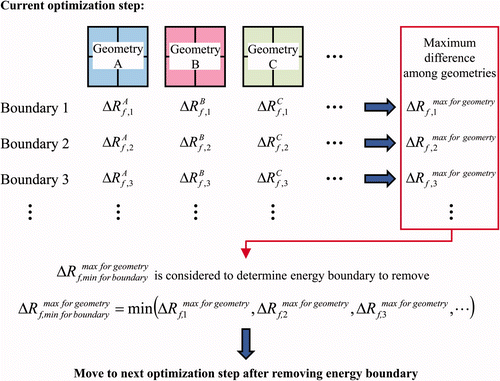Figures & data
Figure 7. Difference of k-infinity and pin-by-pin fission rate distribution in Low-High geometry using the energy group structures obtained by various calculation methods.
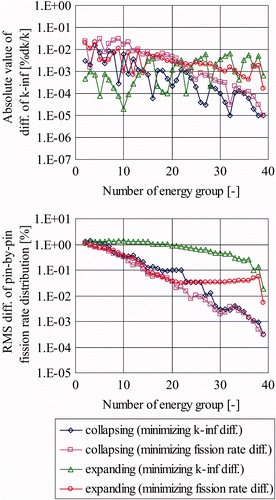
Figure 8. Difference of k-infinity and pin-by-pin fission rate distribution in Low-MOX geometry using the energy group structures obtained by various calculation methods.
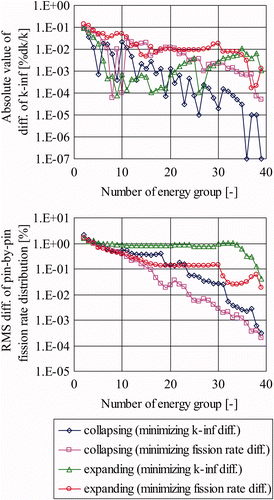
Figure 9. Difference of k-infinity and pin-by-pin fission rate distribution in High-MOX geometry using the energy group structures obtained by various calculation methods.
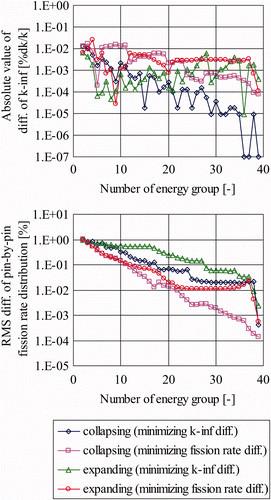
Figure 10. Energy group structure obtained by the successive collapsing method in Low-High geometry.
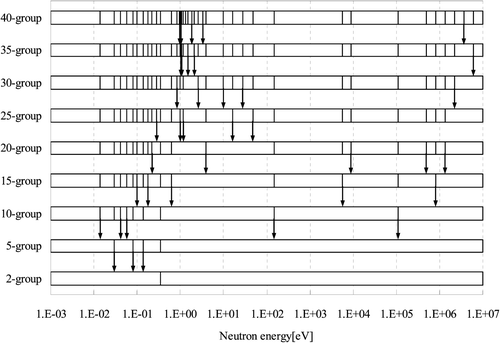
Figure 14. Energy group structure obtained by the successive collapsing method in High-MOX geometry.
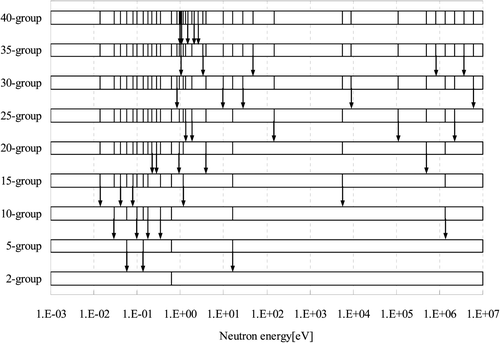
Figure 16. Difference of k-infinity and pin-by-pin fission rate distribution in Low-High geometry using the energy group structures obtained with various numbers of candidates.
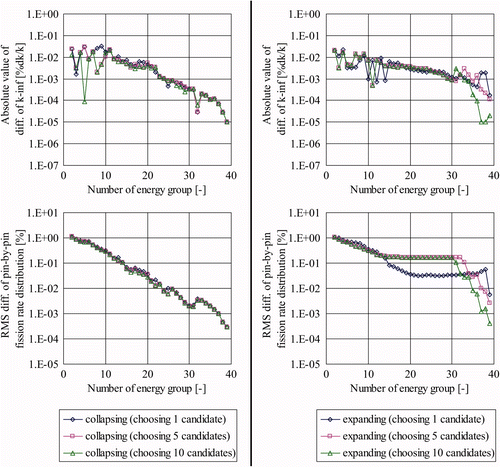
Figure 17. Difference of k-infinity and pin-by-pin fission rate distribution in Low-MOX geometry using the energy group structures obtained with various numbers of candidates.
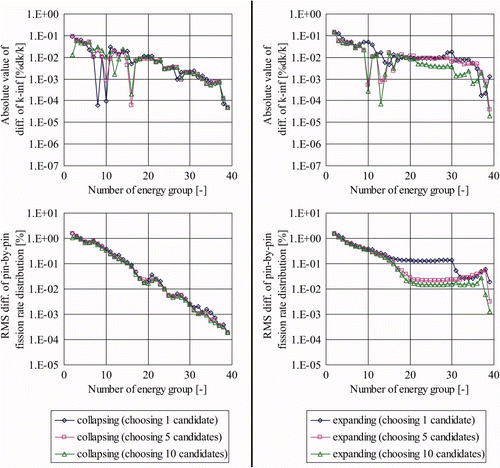
Figure 18. Difference of k-infinity and pin-by-pin fission rate distribution in High-MOX geometry using the energy group structures obtained with various numbers of candidates.
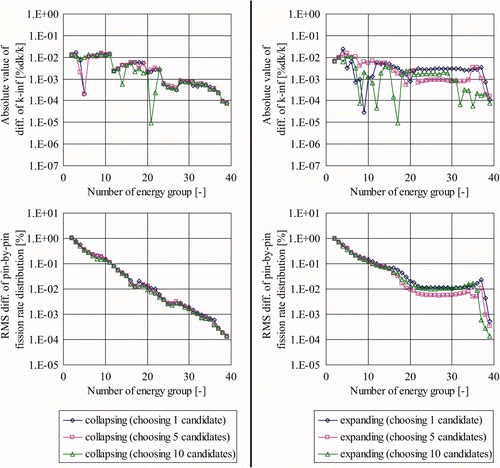
Figure 21. Difference of k-infinity and pin-by-pin fission rate distribution in multi-assemblies geometry using the energy group structures obtained by the successive collapsing method (simultaneously applied in 63 configurations).
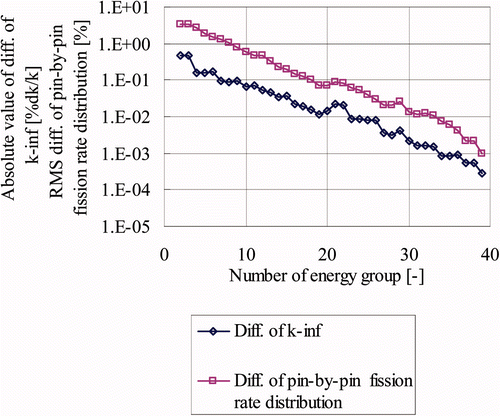
Table 1. Differences of k-infinity and pin-by-pin fission rate distribution for various energy group structures obtained in the process of the successive collapsing method.
Table 2. Energy group structures determined by the successive collapsing method.
Figure 20. Energy group structures obtained by the successive collapsing method (simultaneously applied in 63 configurations).
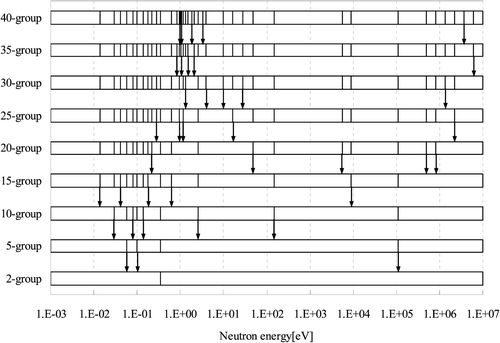
Figure 22. Differences of k-infinity and pin-by-pin fission rate obtained with the determined 2-, 5-, 8-, and 15-group energy structures.
